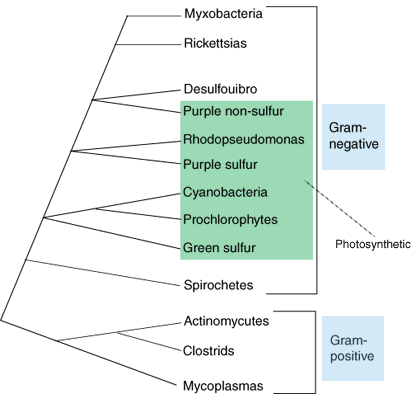Please wait while we process your payment
If you don't see it, please check your spam folder. Sometimes it can end up there.
If you don't see it, please check your spam folder. Sometimes it can end up there.
Please wait while we process your payment
Get instant, ad-free access to our grade-boosting study tools with a 7-day free trial!
Learn more



This site is protected by reCAPTCHA and the Google Privacy Policy and Terms of Service apply.
Create Account
Select Plan
Payment Info
Start 7-Day Free Trial!

Annual
2-49 accounts
$22.49/year + tax
50-99 accounts
$20.99/year + tax
Select Quantity
Price per seat
$29.99 $--.--
Subtotal
$-.--
Want 100 or more? Request a customized plan
You could save over 50%
by choosing an Annual Plan!

SAVE OVER 50%
compared to the monthly price!
| Focused-studying | ||
| PLUS Study Tools | ||
| AP® Test Prep PLUS | ||
| My PLUS Activity | ||
$22.49/month + tax
Save 25%
on 2-49 accounts
$20.99/month + tax
Save 30%
on 50-99 accounts
| Focused-studying | ||
| PLUS Study Tools | ||
| AP® Test Prep PLUS | ||
| My PLUS Activity | ||
No Fear provides access to Shakespeare for students who normally couldn’t (or wouldn’t) read his plays. It’s also a very useful tool when trying to explain Shakespeare’s wordplay!
Erika M.
I tutor high school students in a variety of subjects. Having access to the literature translations helps me to stay informed about the various assignments. Your summaries and translations are invaluable.
Kathy B.
Teaching Shakespeare to today's generation can be challenging. No Fear helps a ton with understanding the crux of the text.
Kay H.
No Fear provides access to Shakespeare for students who normally couldn’t (or wouldn’t) read his plays. It’s also a very useful tool when trying to explain Shakespeare’s wordplay!
Erika M.
I tutor high school students in a variety of subjects. Having access to the literature translations helps me to stay informed about the various assignments. Your summaries and translations are invaluable.
Kathy B.
Teaching Shakespeare to today's generation can be challenging. No Fear helps a ton with understanding the crux of the text.
Kay H.
Create Account
Select Plan
Payment Info
Start 7-Day Free Trial!
You will only be charged after the completion of the 7-day free trial.
If you cancel your account before the free trial is over, you will not be charged.
You will only be charged after the completion of the 7-day free trial. If you cancel your account before the free trial is over, you will not be charged.
Order Summary
Annual
7-day Free Trial
SparkNotes PLUS
$29.99 / year
Annual
Quantity
51
PLUS Group Discount
$29.99 $29.99 / seat
Tax
$0.00
SPARK25
-$1.25
25% Off
Total billed on Nov 7, 2024 after 7-day free trail
$29.99
Total billed
$0.00
Due Today
$0.00
Promo code
This is not a valid promo code
Card Details
By placing your order you agree to our terms of service and privacy policy.
By saving your payment information you allow SparkNotes to charge you for future payments in accordance with their terms.
Powered by stripe
Legal
Google pay.......



Please wait while we process your payment

Sorry, you must enter a valid email address
By entering an email, you agree to our privacy policy.
Please wait while we process your payment

Sorry, you must enter a valid email address
By entering an email, you agree to our privacy policy.
Please wait while we process your payment

Your PLUS subscription has expired
Please wait while we process your payment
Please wait while we process your payment

Eubacteria
Eubacteria, also known as the true bacteria, have a bad reputation. They are seen as disease causing agents. Every day new products come out adverstising their ability to destroy these microscopic but dangerous creatures. In reality, only a small percentage of these unicellular organisms cause disease. The rest fullfill many important roles in the natural world. Eubacteria can be photoautotrophs, saprophytes, or symbionts.

The Eubacteria are an ancient and diverse group. Different species have evolved to fit in every type of environment and lifestyle. They are often classified by their oxygen requirements and by the type of nutrition in which they engage.
A great many of the most familiar eubacteria are heterotrophs, meaning they must take food in from outside sources. Of the heterotrophs, the majority are saprophytes, which consume dead material, or parasites, which live on or within another organism at the host's expense.
In addition to the heterotrophs, there are many kinds of autotrophic bacteria, able to produce their own food. These autotrophs may be photosynthetic or chemosynthetic and may or may not use oxygen in their synthetic pathways. Cyanobacteria are the largest group of photosynthetic eubacteria. The cells of these bacteria are often much larger than other bacteria, which in the past led this group to be classified as algae rather than bacteria. In fact, cyanobacteria are still sometimes referred to as blue-green algae. These eubacteria possess pigment molecules, including chlorophyll a, the same type of chlorophyll found in higher plants. Unlike plants, in cyanobacteria the pigments are not contained within membrane-bound chloroplasts.
Respiration of eubacteria may be aerobic or anaerobic. The anaerobes undergo a form of respiration called fermentation. Among anaerobes, some can live in the presence or absence of oxygen. These are called facultative anaerobes. Some are indifferent to the presence of oxygen, but others have two respiratory pathways, one that uses oxygen and one that does not. The other group of anaerobes, the obligate anaerobes, are actually poisoned in the presence of oxygen.
In addition to respiratory and nutritional habits, one other important feature used to classify bacteria is Gram staining. Gram's stain will highlight peptidoglycan if it appears in a cell wall. Not all groups of eubacteria have peptidoglycan, so all eubacteria may be classified as either Gram-positive (able to bind Gram's stain) or Gram-negative (unable to bind Gram's stain).
Please wait while we process your payment





